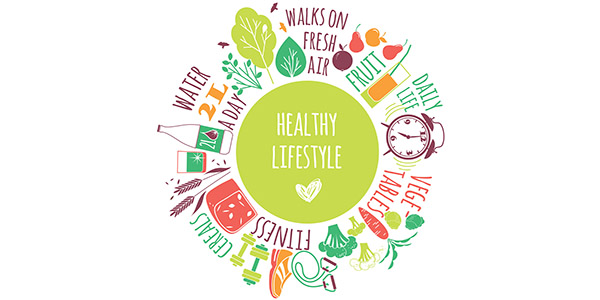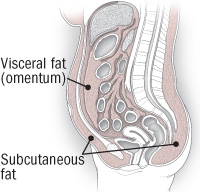Metabolism And Fat Loss Secrets
The human body sends signals and communicates with itself in two ways: 1) Biologically, through electrical impulses and 2) Chemically, through hormones. Metabolism can be thought of as the balancing of chemical and biological reactions.
The amount of fat or muscle a person can obtain is not dependent on nutrition or physical training, but on one's metabolism. Of course metabolism can be influenced by nutrition and physical training but too often we think that by only eating less and training more, we can reach our ideal body image.
Sorry guys but by not considering metabolism, this formula will only lead to failure. Think about that very lean friend of yours who eats like crap and never works out but still stays lean. Or about that obese friend who starves him/herself and never loses a pound.
Your metabolism can turn your body into a fat burning machine, or it can cause your body to gain ridiculous amounts of fat. The good news is that your metabolism is always changing and is easy to control, if you know how.
Metabolism is controlled by our hormones, or more specifically hormone sensitivity. Fat tissues and protein (muscle) tissues are always in a state of either building up (anabolic) or breaking down (catabolic). The hormones travel to the tissues and attach to receptors.
Hormones can be either anabolic (Testosterone, Growth Hormone, Insulin), or catabolic (Cortisol). Hormone effectiveness is determined by the amount of hormones released and the sensitivity of the tissues.
You want your tissues to be very sensitive. This will allow for a small amount of hormones to do a great amount of work. If your tissues are not sensitive, a large amount of hormones will be released and not much work will get done. This is where you can get into trouble.
It can be thought of as either 10 men doing the work of 1000 men, or 1000 men doing the work of 10 men. When you have a large amount of hormones with no work to do, they will begin to have harmful effects.
Insulin is by far the most important hormone when it comes to metabolism. Insulin is the most anabolic and anti-catabolic hormone in the body, and lucky for us it's the most easily controlled.
When we eat, glucose (blood sugar) is released into the blood stream. Insulin is then triggered to take this glucose to the tissues. If our tissues are not sensitive to insulin at that time, both glucose and insulin levels will remain elevated for a prolonged period of time.
Guess what, this is the profile of a Type II Diabetic. It's very easy to get into this state, even for non-diabetics. It also is very easy to avoid this state, if you know how. This is the absolute worst state you could be in. This is when the most fat is stored and when the body's organs and defenses are most vulnerable.
You want to always have low levels of insulin release (except post-exercise), and very sensitive tissues. Poor sensitivity to insulin leads to poor sensitivity to lipids as well, which can lead to a whole list of other problems.
So how can we get our metabolisms to work for us? Through diet, supplements, resistance training, and cardiovascular training we can influence tissue sensitivity. Also, by having more lean muscle mass and less fat, metabolism can be improved.
Studies a have shown that leaner subjects have both greater tissue sensitivity and an increased metabolism. So the goals of metabolism training are to improve tissue sensitivity and to increase lean muscle mass.
- Prev:Killer Fat Cells
- Next:Supersizing America
-
Before Losing Your Weight, Know These
A slim body seems like everybodys desire. Desire to those who are stil
-
How to Lose Weight in 30 Days, Look Great and Feel Fabulous!
Want to look and feel great? It all starts with just 30 days... and
-
Lets Expose Some Popular Diet Myths
Are those extra inches round your waist leaving you sleepless? Has you
-
What Happens When You Eat Six Measl A Day? Weight Loss
I bet you have heard before that if you eat six meals a day, weight lo
-
Best Fat Burning Exercise That Slim People Know
Sit ups is definitely not the best fat burning exercise you can fin
-
Tips on how to Lose Stomach Fat
Its been a dieters dilemma for ever. Oth
- DON'T MISS
- Weight Loss With Palm Springs Diet
- Diet Program – Do it the proper way – is there a most effective quick weight-loss diet plan
- If You Need To Lose Weight Try These Tips To Help You Get in Shape Fast
- The Truth Behind Walking vs. Running for Weight Loss
- Top Weight Loss Tricks - Weight Loss Secrets
- Weight Loss Basics -- An Investment in Health
- This Is My Favorite Chest Exercise
- Release Stubborn Fat and Stay Lean the Easier Way
- Obesity - Is There A Cure?
- No Cost Diet Plans That Work Fast




